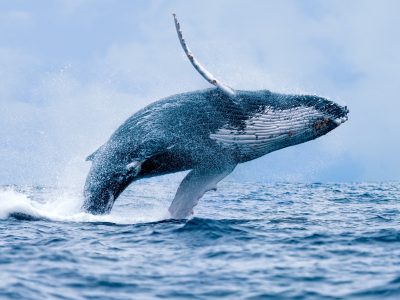King Snake
Lampropeltis species
King Snakes eat other types of snakes.
Advertisement
King Snake Facts
- Prey
- Other snakes, rodents, lizards, birds
- Group Behavior
- Solitary
- Solitary except during mating season
- Fun Fact
- King Snakes eat other types of snakes.
- Diet
- Carnivore
View all of the King Snake images!
“King Snakes eat other types of snakes.”
King snakes can climb trees and swim. They are carnivores eating rodents, birds, birds’ eggs, lizards, and other snakes. These snakes are not venomous; instead, they squeeze their prey to death. Their lifespan is 10 to 15 years.

4 King Snake Amazing Facts
- They are not harmed by the venom of other snakes
- Its lifespan is 10 to 15 years
- Due to their scale pattern, they are sometimes called a chain snake
- They release a musk odor to deter predators
Where to Find Them

Prairie Kingsnake
©Matt Jeppson/Shutterstock.com
King snakes live in North America, specifically in the eastern, western, and southern parts of the United States. Different species of king snakes live in different sections of the United States, and some live in Mexico.
The habitat of this snake differs among species as well. Some of them live in forests and grasslands near bodies of water, while others live in a desert habitat. In a forest or grassland habitat, these snakes hide in hollow trees or beneath piles of leaves and sticks. Alternatively, in the desert, they can be found under rocks or in tight crevices.
These snakes are active in the spring and summer. Their breeding season goes from March to May, and their eggs hatch late in the summer season.
Species
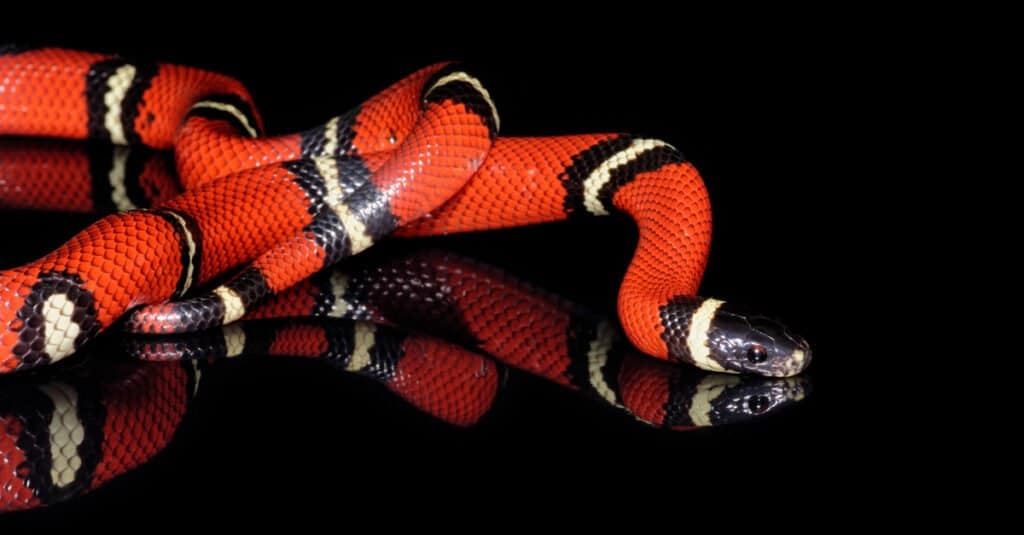
Scarlet king snakes are native to the southeastern USA and are between 20-28 inches long on average.
©Valt Ahyppo/Shutterstock.com
There are six species of king snake, and they all belong to the Colubridae family. Though some of these snakes have a similar appearance, they live in different places.
- Common king snake or Eastern king snake (Lampropeltis getula)-This species of king snake lives on the eastern coast of the United States from Pennsylvania to Florida. Though they usually grow to a length ranging from 36 to 48 inches, the longest Eastern king snake on record is 82 inches.
- California king snake (Lampropeltis californae)-These king snakes live in cliff areas, wetlands, and grassland areas of California. It is less colorful than other species of king snake with its black or brown scales featuring white bands.
- Speckled king snake (Lampropeltis holbrooki)-This species lives in the middle and southern portion of the United States and into Mexico. Its territory includes Iowa, Kansas, Louisiana, Missouri, and Texas. Some can even be found as far south as Mexico. It’s named for its black body covered in yellow spots, or speckles.
- Desert king snake (Lampropeltis splendida)-As its name indicates, this snake has a desert habitat. It lives in the southern part of the United States including Texas and New Mexico and its territory extends into Mexico. This species is shy and known to ‘play dead’ when confronted by a human.
- Black king snake or Eastern black king snake (Lampropeltis nigra)-It lives in the southern part of the United States including the states of Kentucky, Tennessee, Alabama, Louisiana, and the northern part of Georgia. Its dark scales set it apart from the more colorful species of king snake.
- Scarlet king snake (Lampropeltis elapsoides)-This species is especially colorful with its bands of black, red, white, and yellow. It lives in the eastern and southeastern portions of the United States. This is the smallest species of king snake, usually measuring no more than 20 inches long. However, the largest scarlet kingsnake ever recorded was 28 inches long.
Scientific Name

Common kingsnake swimming in water in Tucson, Arizona.
©iStock.com/Florence and Joseph McGinn
Lampropeltis getula is the scientific name for the common or Eastern king snake. It’s in the Colubridae family and the class Reptilia. The Greek word Lampropeltis means shiny, while getula refers to its bands of scales.
The species of king snake are:
- Lampropeltis getula
- Lampropeltis californae
- Lampropeltis holbrooki
- Lampropeltis splendida
- Lampropeltis nigra
- Lampropeltis elapsoides
Population and Conservation Status
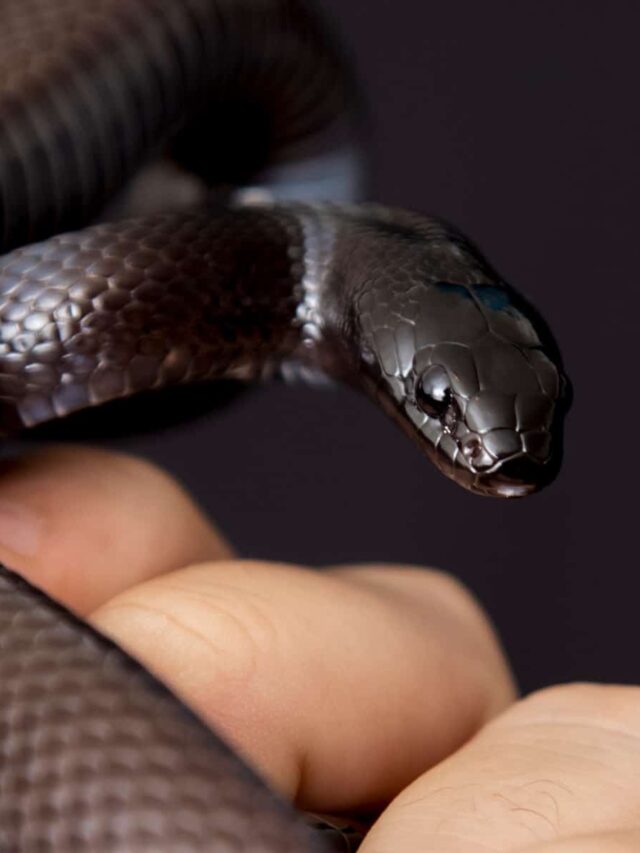
The black king snake lives in Mexico.
©Murilo Gualda/Shutterstock.com
The population of the Eastern or common king snake is unknown. But biologists believe its population exceeds 100,000 mature adults. The IUCN Red List of Threatened Species reports its conservation status as Least Concern with a population that is stable.
Appearance and Description
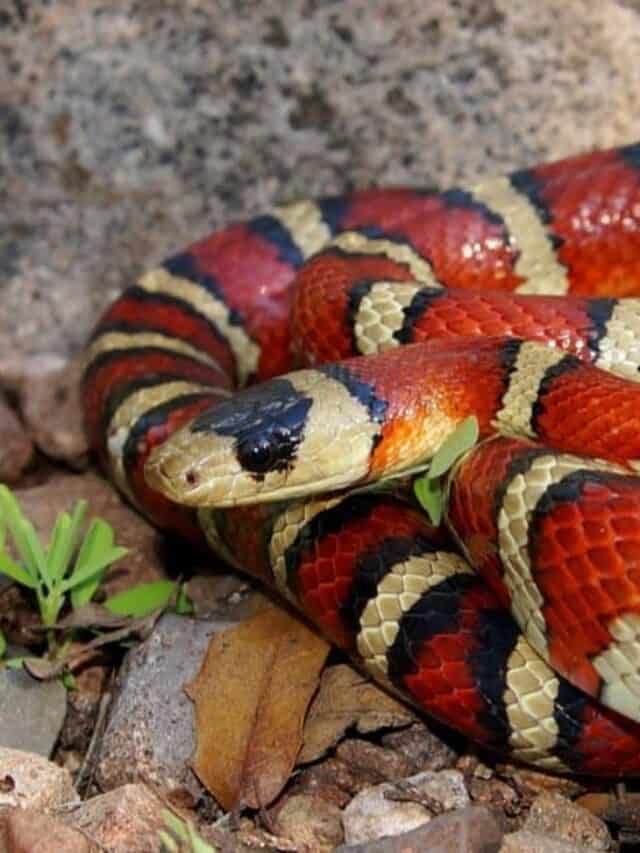
Kingsnakes are commonly mistaken for coral snakes because of their color.
©Matt Jeppson/Shutterstock.com
An Eastern king snake has black or brown scales with 30 narrow vertical bands of yellow or white on its back. Its underbelly is yellow with zig-zagging patterns of black scales.
This species of king snake is very different in appearance from the scarlet king snake. The scarlet king snake has alternating bands of bright red, black, white, and yellow.
The typical size of the Eastern king snake is 36 to 48 inches in length. They weigh up to four pounds. The longest king snake recorded is up to 7 feet!
How to Identify Eastern King Snakes
- A black or brown background of scales
- 30 narrow bands of yellow or white horizontal scales
- A yellow or white underbelly with zig-zagging black scales
Evolution and Origins

Speckled Kingsnake
©Joe Farah/Shutterstock.com
The earliest known ancestor of snakes was a nighttime hunter that possessed small hindlegs with ankles and toes. Recent research suggests that snakes originated on land, not in the ocean, during the middle Early Cretaceous period (around 128.5 million years ago) located in Laurasia. By analyzing the fossils, genetics, and anatomy of 73 species of snakes and lizards (both living and extinct), researchers were able to gain a better sense of what the initial snake was like.
It is believed that the original snake had two small hind legs and preyed on larger animals than lizards of the time. It was not able to coil around larger creatures like modern boa constrictors can. The snake was thought to be active at night, but 50-45 million years ago, this changed when the Colubroidea family of snakes emerged, and they mostly operate during the day. This may have been advantageous due to cooler night temperatures limiting nighttime activity, contributing to their success.
Snakes have an astonishing variety, with over 3,400 living species living in diverse habitats such as on land, in water, and in trees. Research indicates that snakes have been able to survive and thrive in many different kinds of habitats thanks to their exceptional capacity for dispersing over long distances. Scientists have estimated that snakes can travel up to 42,500 square miles, which is approximately 4.5 times farther than lizards. Furthermore, they have managed to inhabit environments that are typically impassable for terrestrial animals and have managed to colonize aquatic habitats multiple times throughout their evolution.
Snakes have come a long way since their initial ancestors and continue to be fascinating species to study. Their ability to adapt to different environments allows them to remain one of the most successful animals on Earth today.
King Snake Pictures

King snakes are listed on the IUCN Red List of Threatened Species as Least Concern.
©Matt Jeppson/Shutterstock.com

The California kingsnake (
Lampropeltis californiae) is a nonvenomous snake that naturally appears in aberrant patterns and even colors.
©Murilo Mazzo/Shutterstock.com

California King Snakes live in cliff areas, wetlands, and grassland areas of California.
©Ann May Snz/Shutterstock.com
How Dangerous Are They?
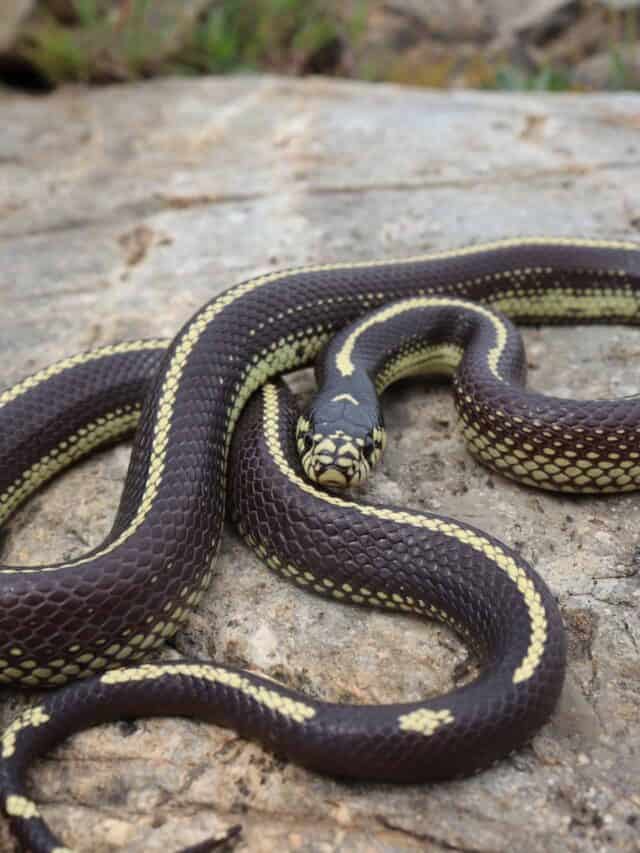
The Striped Color Phase is one of the many California kingsnake color morphs.
©Creeping Things/Shutterstock.com
King snakes are not venomous. They are shy snakes that would rather slither beneath a gathering of leaves or a rock than confront a threat. In fact, one species of king snake called the desert king snake plays dead when threatened by a human. This means it remains still on the ground until the human moves away and the snake can escape to safety.
Despite having a shy temperament, a king snake may bite a human if it feels threatened. Though this snake isn’t venomous, its bite can be painful. If someone gets a bite from a king snake, the first thing to do is wash the area with soap and warm water. Then, put first-aid ointment on it. If there’s pain, putting ice on the area can offer relief.
Remember, there’s always the potential for infection, so if a rash appears in the bite area, it’s best to see a doctor.
Behavior and Humans

Lampropeltis getula meansi, commonly known as Apalachicola Kingsnake
©Left Handed Photography/Shutterstock.com
King snakes are shy and prefer to remain hidden in their habitat. These snakes are not considered pests. In fact, the opposite is true!
They eat rodents which keeps the population of mice and moles under control. So, if a homeowner sees a king snake in their garden or on their property, this reptile should be left alone to hunt rodents.
Similar Animals
- Bull Snake (Pituophis catenifer) has a really loud hiss, thanks to a modified epiglottis.
- Racers (Coluber constrictor) are long, thin, and fast!
- Coachwhips (Masticophis flagellum) like to periscope up to see above the grasses of their home, looking for a meal.
39 Types of King Snakes

California king snakes can measure up to 60 inches.
©reptiles4all/Shutterstock.com
| 39 Species of King Snakes |
|---|
| Guatemalan milk snake, Lampropeltis abnorma (Bocourt, 1886) |
| Gray-banded kingsnake, Lampropeltis alterna (A. E. Brown, 1901) |
| Mexican milk snake, Lampropeltis annulata Kennicott, 1860 |
| California kingsnake, Lampropeltis californiae (Blainville, 1835) |
| Prairie kingsnake, Lampropeltis calligaster (Harlan, 1827) |
| Santa Catalina Island kingsnake, Lampropeltis catalinensis (Van Denburgh & Slevin, 1921) |
| Scarlet kingsnake or scarlet milk snake, Lampropeltis elapsoides (Holbrook, 1838) |
| Short-tailed snake, Lampropeltis extenuata (R.E. Brown, 1890) |
| Central Plains milk snake, Lampropeltis gentilis (Baird & Girard, 1853) |
| Common kingsnake, Lampropeltis getula (Linnaeus, 1766) |
| Brooks’ kingsnake, L. g. brooksi Barbour, 1919 |
| Florida kingsnake, L. g. floridana (Blanchard, 1919) |
| Eastern kingsnake, L. g. getula (Linnaeus, 1766) |
| Apalachicola Lowlands kingsnake, L. g. meansi Krysko & Judd, 2006 |
| Mexican black kingsnake, L. g. nigrita Zweifel & Norris, 1955 |
| Greer’s kingsnake, Lampropeltis greeri (Webb, 1961) |
| Speckled kingsnake, Lampropeltis holbrooki Stejneger, 1902 |
| Madrean mountain kingsnake, Lampropeltis knoblochi Taylor, 1940 |
| Nuevo León kingsnake, Lampropeltis leonis (Günther, 1893) |
| Mexican kingsnake, Lampropeltis mexicana (Garman, 1884) |
| Ecuadorian milk snake, Lampropeltis micropholis Cope, 1860 |
| Black kingsnake, Lampropeltis nigra (Yarrow, 1882) |
| South Florida mole kingsnake, Lampropeltis occipitolineata Price, 1987 |
| Central American milk snake, Lampropeltis polyzona Cope, 1860 |
| Arizona mountain kingsnake, Lampropeltis pyromelana (Cope, 1866) |
| Utah mountain kingsnake, L. p. infralabialis W. Tanner, 1953 |
| Arizona mountain kingsnake, L. p. pyromelana (Cope, 1866) |
| Mole kingsnake, Lampropeltis rhombomaculata (Holbrook, 1840) |
| Ruthven’s kingsnake, Lampropeltis ruthveni (Blanchard, 1920) |
| Desert kingsnake, Lampropeltis splendida (Baird & Girard, 1853) |
| Milk snake, Lampropeltis triangulum (Lacépède, 1789) |
| Lampropeltis webbi Bryson, Dixon & Lazcano, 2005 |
| California mountain kingsnake, Lampropeltis zonata (Lockington, 1876 ex Blainville, 1835) |
| San Pedro kingsnake, L. z. agalma (Van Denburgh & Slevin, 1923) |
| Todos Santos Island kingsnake, L. z. herrerae (Van Denburgh & Slevin, 1923) |
| Sierra Nevada mountain kingsnake, L. z. multicincta (Yarrow, 1882) |
| Coast Ranges mountain kingsnake, L. z. multifasciata (Bocourt, 1886) |
| San Bernardino mountain kingsnake, L. z. parvirubra Zweifel, 1952 |
| San Diego mountain kingsnake, L. z. pulchra Zweifel, 1952 |
| Saint Helena mountain kingsnake, L. z. zonata (Lockington, 1876 ex Blainville, 1835) |
King Snake FAQs (Frequently Asked Questions)
What's the difference between king snakes and cottonmouths?
King snakes are nonvenomous while cottonmouths have venom. Both snakes are relatively equal in length, but king snakes tend to be darker while cottonmouths are brownish with diamond-like patterning.
Are king snakes venomous?
No. King snakes are not venomous.
How do king snakes hunt?
King snakes stalk their prey, grab ahold of it with their jaws, and wrap around it. They are constrictors. They wrap around their prey to constrict its breathing in order to kill it, then swallow it.
Are king snakes aggressive?
No, these snakes are not aggressive.
Are king snakes friendly?
While king snakes are not aggressive, they don’t want to interact with humans. They’d rather take shelter beneath a rock or pile of leaves.
Why are these reptiles called king snakes?
They are called king snakes because they consume other snakes. Furthermore, some of the snakes they eat such as copperheads and rattlesnakes are venomous. King snakes are immune to the venom of these snakes and hunt rattlesnakes- read more about that here.
Where do king snakes live?
King snakes live in the United States and down into Mexico. Different species of king snakes live in different sections of the United States and Mexico.
The habitat of this snake includes rock ledges, hollow logs, piles of leaves and beneath tree bark.
Some of these snakes seek shelter underground during brumation. Brumation is a reptile’s version of hibernation.
What do king snakes eat?
King snakes are carnivores. They eat rodents, birds, birds’ eggs, lizards, and even other snakes.
How big does a king snake get?
Most king snakes grow to a size of 36 to 48 inches long. But one Eastern king snake was recorded at a size of 82 inches!
Do king snakes bite humans?
Yes, but it’s rare. These snakes would rather slither away or play dead than confront a human. But they are able to bite a person if they feel cornered.
Is a king snake a good pet?
No. Though many of these snakes are colorful like the scarlet king snake or have interesting scale patterns like the speckled king snake, they are not suitable pets.
They need to be kept in an enclosure that maintains a certain temperature or they can easily become sick and die. Also, these snakes want to hunt and capture their food instead of having something fed to them. Finally, this is a shy snake likely to become stressed when an owner tries to handle it.
What are the differences between Copperhead and Kingsnake?
The main differences between copperheads and kingsnakes are that they belong to different families, inhabit slightly different ranges, and have unique physical characteristics. They differ in size, reproduce by different methods, kill unique prey by different means, and only one of them poses a threat to humans.
What's the difference between kingsnakes and king cobras?
King cobras are much larger than kingsnakes, as well as far more venomous. Kingsnakes are also more colorful than king cobras.
Thank you for reading! Have some feedback for us? Contact the AZ Animals editorial team.
Sources
- , Available here: https://mdc.mo.gov/discover-nature/field-guide/speckled-kingsnake
- , Available here: https://en.wikipedia.org/wiki/California_kingsnake
- , Available here: https://kysnakes.ca.uky.edu/snake/lampropeltis-getula-nigra
- , Available here: https://www.floridamuseum.ufl.edu/florida-snake-id/snake/scarlet-kingsnake/
- , Available here: https://www.tn.gov/twra/wildlife/reptiles/snakes/common-kingsnake.html
- , Available here: https://www.beardsleyzoo.org/eastern-kingsnake.html
- (1970) https://www.iucnredlist.org/species/67662588/67662645 Jump to top








